
Sunday, 7 pm May 19, 2002
at YWCA, 7 Temple St near central square in Cambridge, MA
for more info please call Chris at 800-896-7340 or email info@kalistos.org
the program will feature the following pieces
George Frideric Handel Concerto grosso in D major,
Op.6 No.5 [1739]
Osvaldo Golijov Last Round [1996]
Josef Suk Serenade
in E flat major for strings, Op.6 [1892]
Gabriela Lena Frank Leyendas: An Andean
Walkabout [1999/2002]
(excerpts originally for string quartet, arranged for especially for
Kalistos Chamber Orchestra)
Tickets can be purchased at the door at the following prices
$15 Adults
$10 Students
$5 Seniors and Young Person under 14


Program Notes
Handel, George Frideric
Concerto grosso in D major, Op.6 No.5 [1739]
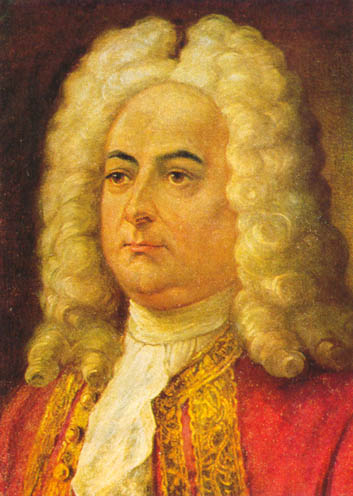
The baroque concerto grosso is by nature a rather ramshackle sort of
thing: like so many inventions across the arts and sciences, it was originally
not so much a creation in its own right as an ad-hoc assemblage of pieces
and parts stolen from other things-- "things" in this case being musical
forms. Trio sonata, instrumental canzona, sinfonia, polychoral music, and
all kinds of lesser, half-forgotten musical blueprints all meet in the
concerto grosso. The trio sonata might be said to provide the concerto
grosso body, the other forms its various appendages and its physiognomy.
Concerti grossi first began to appear during the last quarter of the seventeenth
century-- thousands and thousands of them, in a bewildering variety of
designs and shapes and sizes. However, musicians and publishers have always
been quick to create rules and traditions where none existed before, and
by the time George Frideric Handel inherited concerto grosso form in the
second decade of the eighteenth century, it was a well-organized beast
that a savvy audience could feel confident and secure listening to. The
sweeping success of Arcangelo Corelli (aided by the inevitable army of
copycat composers) had seen to that.
There are two large sets of Handel concerti grossi. Six concerti appeared under the designation Opus 3 in 1734, most of the music having been composed ten or fifteen years before that. A further twelve concerti grossi were composed in October of 1739 and published the following year as Twelve Grand Concertos for strings, Opus 6. The piece on tonight's program is the fifth in that set, the Concerto grosso in D major, Op.6 No.5. It was finished, according to a note at the end of the manuscript, on October 10, 1739.
Handel is rightly said to have generally followed the Corelli concerto grosso model when writing his own. At the same time, Handel preferred things not to be too well-ordered in either music or life, and so he immediately set about twisting some of the accepted patterns and rules of concerto grosso production all out of shape. He simply threw whatever that struck his fancy-- different kinds of movements, High Baroque idioms, more guttural Low Baroque ones-- into one big pot, boiled it all together, and, by virtue of masterful presentation, concocted in Opus 6 one of the highpoints of late Baroque large ensemble music.
The Concerto grosso in D major, Op.6 No.5 is a six movement work. Things begin as an enlightened baroque audience would expect. There is an introductory slow movement, bearing the dotted-rhythm imprint of the still-fashionable French overture, and then a fast, fugal second movement (Allegro). But, since most concerti grossi follow the sonata da chiesa format, we would anticipate a slow movement next, and here Handel throws us a curveball: the third movement of Op.6 No.5 is a lightning-fast Presto in three-eight meter, the sort of movement that traditionally ends a piece, not the sort of thing we would expect to find at its center. With the lugubrious, slow fourth movement (Largo, in B minor), however, things seem to have fallen back in line, and the following chirrupy, birdcall-filled Allegro (movement 5) might well be a boisterous finale. But, alas, Handel's impish guile strikes again, and there's yet another movement. Inscrutably, ingeniously and (perhaps) ingenuously, he ends the Concerto with a lighthearted Menuet, a happy little three-step that he describes as Un poco larghetto.
The Concerto is scored for an ensemble of two solo violins (called the "concertante") and a body of tutti strings-- violins, violas, cellos and basses (called the "ripieno"). However, the line between concertante and ripieno is sometimes a blurry one, and the two concertante violinists are not the only players granted the spotlight as the Concerto goes along: there are solo passages for viola and cello as well, though Handel did not make these soloists part of the official concertante body. Ever playful, Handel teases the performers by making a phony deployment of the two concertante violin parts at the start of the piece. In the first movement, the second concertante violinist, though actually the head of the second violin ripieno section, doubles the first violins, leaving the leaderless second violins high and dry. With the Allegro second movement, the second concertante violinist rejoins the second violin ripieno section. Innocuous though such a trick may seem to today's accomplished players, heaven only knows what a ruckus this little switcharoo might have made when the Concerto was played, in 1740, by a group of unrehearsed, sight-reading amateurs!
Self-plagiarism was always one of Handel's favorite techniques: large hunks of this Concerto grosso are ripped directly from the composer's own Overture to the Ode for St. Cecilia's Day and re-arranged to suit the concerto grosso context. And, while the piece is at heart a work for just strings, Handel did at some point add two oboe parts to it-- an afterthought possibly encouraged by his publisher, John Walsh, though Walsh never actually got around to printing the oboe-augmented version. -Blair Johnston
Osvaldo Golijov
Last Round for String Ensemble [1996]
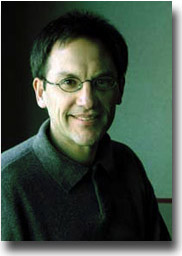
Astor Piazzolla, the last great Tango composer, was at the peak of his creativity when a stroke killed him in 1992. He left us, in the words of the old tango, “without saying good bye”, and on that day the musical face of Buenos Aires was abruptly frozen. The creation of that face had started a hundred years ago from the unlikely combination of African rhythms underlying gaucho’s couplets, sung in the style of Sicilian canzonettas over an accompanying Andalucian guitar. As the years passed, all converged towards the bandoneon: a small accordion-like instrument without keyboard that was invented in Germany in the nineteenh century to serve as a portable church organ and which, after finding its true home in the bordellos of Buenos Aires’ slums in the 1920’s, went back to Europe to conquer Paris’ high society in the 1930’s. Since then it reigned as the essential instrument for any Tango ensemble.
Piazzolla’s bandoneon was able to condense all the symbols of tango. The eroticism of legs and torsos in the dance was reduced to the intricate patterns of his virtuoso fingers ( a simple C major scale in the bandeneon zigzags so much as to leave an inexperienced player’s fingers tangled). The melancholy of the singer’s voice was transposed to the breathing of the bandeneon’s continuous opening and closing. The macho attitude of the tangueros was reflected in his pose on stage: straight upright, chest forward, right leg on a stool, the bandeneon on top of it, being by turns raised, battered , caressed.
I composed Last Round ( the title is borrowed from a short story on boxing by Julio Cortazar) as an imaginary chance for Piazzolla’s spirit to fight one more time. The piece is conceived as an idealized bandeneon. There are two movements: the first represents the act of a violent comperssion of the instrument and the second a final, seemingly endless opening sigh (it is actually a fantasy over the refrain of the song “My beloved Buenos Aires”, composed by the legendary Carlos Gardel in the 1930’s). But Last Round is also a sublimated tango dance. Two quartets confront each other, separated by the focal bass, with violins, violas, standing up as in the traditional tango orchestras. The bow fly in the air as inverted legs in crisscrossed choreography, always attracting and repelling each other, always in danger of clashing, always avoiding it with the immutability that can only be acquired by transforming hot passion into pure pattern. ?Osvaldo Golijov
Suk, Josef
Serenade in E flat major for strings, Op.6 [1892]
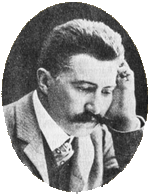
Composing bad or even mediocre music for strings is simpler than composing
bad music for any other instrument group-- any half-wit with manuscript
paper can draw up a translucent background of string sound for their latest
diva-spun pop music ballad. Conversely, the writing of really fine string
ensemble music is one of Western music's most revered, to some even sacred,
tasks. For Beethoven, the string quartet became the be-all, end-all of
music (quite literally, as he wrote his last string quartet music on his
deathbed). Brahms was so intimidated by the intricacies of string quartet
composition that he spent years and years refining the only three quartets
that he passed down to us. The string orchestra is perhaps a little less
demanding on the composer than the string quartet, but it is in the same
arena; composing for it was not a task for a late nineteenth-century composer
to take lightly if he wished to earn respect for his craftsmanship.
Enter Josef Suk in 1892, barely an adult by modern legal standards and just graduated from the Prague Conservatory. Suk certainly knew string instruments. Around the time of his graduation from the Conservatory, Suk, a gifted and now a thoroughly-trained violinist, joined the up-and-coming Czech String Quartet, with whom he averaged one public concert every three to four days for the next forty years! (You do the math.) That kind of performance schedule is no laughing matter for the twenty-first-century, globetrotting, Concorde-riding performer; it could be truly hectic for Suk, who, running between his Czech Quartet duties and (from 1922) his professorship at the Prague Conservatory, had to try hard to scrape up enough time to compose his own music. Life as a professional violinist did, however, afford him an invaluable familiarity with string instruments and all their riches and idiosyncrasies.
Suk began composing only in the late 1880s, and that he should sit down in 1892 to pen a comparatively long string orchestra piece like the Serenade in E flat major for strings, Op.6 is not at all surprising-- one must test one's wings. That the music should turn out so well, on the other hand, did turn some heads-- including those of Antonin Dvorak and Johannes Brahms, who arranged for their own publisher, Simrock, to print the Serenade in 1896. Thanks to this one fine effort, Suk's lamp was lit and burning bright, and, all the majesty of his later achievements notwithstanding, the Serenade remains his best-known work today.
The Serenade has four movements, which together fill a little under half an hour. There is a velvety smoothness to the opening Andante con moto, with its gently gliding violin melody (soon taken over by the cellos) and the lightly bouncing support it gets from the middle of the ensemble. The second movement is somewhat quicker-- but not by much, as the marking Allegro, ma non troppo e grazioso tells us. After the wonderfully, unapologetically indulgent Adagio third movement (listen for the solo!), the violins announce the arrival of the finale (Allegro giocoso) by barking out an effusive grace-note figure that, after being briefly taken up by the rest of the group, soon gets reshaped into music that borrows some lyric velvet from the first movement and applies some heat to it, with results that are energetic and sometimes a little bit strident. -Blair Johnston
Gabriela Lena Frank
Leyendas: An Andean Walkabout [1999/2002]
(excerpts originally for string quartet, arranged for string orchestra)

Leyendas: An Andean Walkabout draws inspiration from the idea of mestizaje
as envisioned by the Peruvian writer José María Arguedas,
whereby cultures coexist without the subjugation of one by the other. As
such, this piece mixes elements from the western classical and Andean folk
music traditions. "Toyos" depicts one of the most recognizable instruments
of the Andes, the panpipe. The largest kind is the breathy toyo
which requires great stamina and lung power, and is typically played in
parallel fourths. "Tarqueada" is a forceful and fast number featuring
the tarka, a heavy wooden duct flute that is blown harshly in order to
split the tone. Tarka ensembles typically play in casually tuned
4ths, 5ths, and octaves. "Himno de Zampoñas" features a particular
type of panpipe ensemble that divides up melodies through a technique known
as hocketing. The characteristic sound of the zampoña panpipe
is that of a fundamental tone blown flatly so that overtones ring out on
top. "Chasqui" depicts a legendary figure from the Inca times the chasqui
runner, who sprinted great distances to deliver messages between towns
separated from one another by the Andean peaks. The chasqui needed
to travel light. Hence, I take artistic license to imagine his choice
of instruments to be the charango, a high-pitched cousin of the guitar,
and the lightweight bamboo quena flute, both of which are featured in this
movement. "Canto de Velorio" portrays another well-known Andean personality,
a professional crying woman known as velorio. Hired to render funeral
rituals even sadder, the velorio is accompanied here by a second velorio
and an additional chorus of mourning women (coro de mujeres). The chant
Dies Irae is quoted as a reflection of the velorio's penchant for blending
verses from Quechua Indian folklore and western religious rites.
"Coqueteos" is a flirtatious love song sung by gallant men known
as romanceros. As such, it is direct in its harmonic expression,
bold, and festive. The romanceros sang in harmony with one another
against a backdrop of guitars which I think of as a vendaval de guitarras
("storm of guitars"). -Gabriela Lena Frank
OSVALDO GOLIJOV
Born in La Plata, Argentina, Osvaldo Golijov lived there and in Jerusalem
before moving to the United States in 1986. He studied with George Crumb
at the University of Pennsylvania, where he earned his doctorate, and with
Lukas Foss and Oliver Knussen at Tanglewood, where he received the Koussevitzky
Composition Prize. He now lives in Newton, Massachusetts, and teaches at
the College of the Holy Cross.
He has won two Kennedy Center Friedheim Awards for chamber music composition, in 1993 for Yiddishbbuk and in 1995 for The Dreams and Prayers of Isaac the Blind. Other recent awards include the Chamber Music Society of Lincoln Center Stoeger Prize for Contemporary Music, the BMW prize for music theatre composition awarded by the jury of the Munich Biennale, and the Paul Fromm Award. He has received commissions and grants from the Koussevitzky, Guggenheim, Barlow, Wexner, and Fromm Foundations; Chamber Music America; Meet The Composer; and the National Endowment for the Arts.
Golijov's music has been performed internationally from Washington's Kennedy Center to Tokyo's Suntory Hall, and at festivals including Tanglewood, Spoleto USA, Oregon Bach Festival, and Germany's Munich Biennale. His music can be heard on the Elektra/Nonesuch label, which recently released a CD of The Dreams and Prayers of Isaac the Blind, recorded by the Kronos Quartet and David Krakauer. His 1996 premieres were Last Round, an hommage to Astor Piazzolla, commissioned by the Contemporary Music Group of the City of Birmingham Symphony Orchestra (UK), and Oceana, premiered at the Oregon Bach Festival.
Current projects include new works commissioned for the Kronos Quartet,
Dawn Upshaw, Chamber Music Society of Lincoln Center, and a chamber opera
for Boston Musica Viva.
In addition to presenting concerts, Ms. Frank enjoys talking with a wide variety of audiences on both contemporary and Hispanic music, including HASTA (Hispanic Americans Striving Towards Achievement), a Latino prison group at the Gus Harrison Correctional Facilities outside of Detroit, Michigan, where she is a regular volunteer. Currently, she is in the process of recording a CD entitled Compadrazgo of classical Hispanic composers influenced by the music of the Quechua/Aymara Indians of the Peruvian and Bolivian Andes. In the Summer of 2001, she will record the complete piano music of Pulitzer Prize winnning composer Leslie Bassett.
Born in Berkeley, CA in 1972, Ms. Frank holds degrees from Rice University
and is presently a doctoral candidate a the University of Michigan in Ann
Arbor where her teachers for composition have included William Albright,
Leslie Bassett, William Bolcom, Evan Chambers, and Michael Daugherty. Her
piano studies are with Logan Skelton.

Leo Eguchi, cello

A native of Michigan, Mr. Eguchi began his cello studies at the age
of twelve with Eva Ell and Louis Potter Jr. He recieved degrees with honors
in Physics and Cello Performance at the University of Michigan in Ann Arbor,
where he studied with Anthony Elliott. He recently completed his Masters
degree at Boston University's College of Fine Arts, where he studyed under
George Neikrug. Leo has performed in masterclasses for such cellists as
Janos Starker, David Soyer, Stephen Kates, Ron Leonard and David Gaber,
and worked first hand with composers William Bolcom, Bright Sheng, George
Crumb and Michael Daugherty. Mr. Eguchi is active in the Boston area as
an orchestral and chamber musician, recitalist and teacher.
Andrew Eng, violin
Mr. Eng graduated from the Royal Conservatory of Music in Toronto,
with the highest performance degree on violin. He has studied with Charles
Castleman, Zvi Zietlin and Corey Gemmel. He is currently studying with
Laura Bossert at the Longy School of Music in Cambridge, Massachusetts.
As a member of the York String Quartet, he performed across Southern Ontario.
He has also been part of the Spoletto, USA festival in Charleston, SC.
In the United States, he has performed in collaboration with pianists,
quartets, and other ensembles. He. had the opportunity to play Bartok's
2nd String Quartet with Eugene Drucker. Mr. Eng is an advocate for new
music and recently commissioned 24 Caprices for violin from a Boston based
composer, Liam Wade. He has been invited to premiere works across the US.
Andrew also performs on the viola and recently began playing baroque violin.
Andrew is active as a chamber musician and solo recitalist across the US
and Canada.
Yi Ching Fedkenheuer, violin
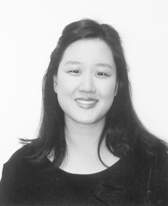
Ms. Fedkenheuer hails from sunny Southern California, and holds a Bachelor
of Music degree from Rice University's Shepherd School of Music and a Master
of Music degree from the Cleveland Institute of Music. Her teachers include
Peter Salaff, David Russell, Kenneth Goldsmith, and Charles Stegeman. Ms.
Fedkenheuer has worked with artists such as Martha Strongin-Katz, Paul
Katz, Anne Epperson, and members of the Cavani, Ying, and Miami String
Quartets.Active in solo, chamber, and orchestral settings, she has appeared
in concert in New York City, Los Angeles, Santa Barbara, Houston, Cleveland,
and throughout Taiwan and Italy. She also maintains a private teaching
studio and is currently on faculty at Powers Music School. Locally, Ms.Fedkenheuer
performs with the Boston Philharmonic Orchestra, Boston Modern Orchestra
Project, Rhode Island Philharmonic, Boston Ballet Orchestra, and Pro Arte
Chamber Orchestra
Lelia Iancovici, violin
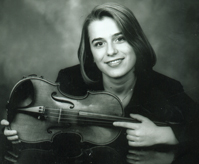
A native of Bucharest, Romania, Ms. Iancovici began playing the violin
at the age of seven under the tutelage of D.Ionescu and M. Tomescu. She
has received numerous awards including first prizes at the “Concorso Internazionale
di Musica 'Isola di Capri'” (Italy), the “'W. A. Mozart' Interpretation
Festival” (Romania), and the “Contest for 'W.A.Mozart Violin and Piano
Sonata Interpretation'” (Romania). Ms. Iancovici has performed in masterclasses
for Sergiu Luca, Ana Chumanchenco, Emilian Piedicuta, Adelina Oprean, Chaba
Erdely, and Claude Hobson. In 2001, she was a participant in the Kent/Blossom
Festival where she received the Joseph Gingold Award and studied with William
Preucil and Anton Nel. Ms. Iancovici received her Bachelor of Music degree
from the University of Illinois at Urbana-Champaign, where she studied
with.Sherban Lupu, and her Master of Music degree from Boston University
studying with. Peter Zazofsky. She was recently invited to be a fellow
at the Tanglewood Music Center for the 2002 season.
Chris Younghoon Kim, conductor
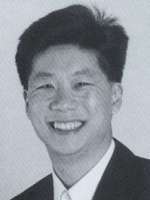
was born in Seoul, South Korea. He is currently the interim Director
of Orchestra at Tufts University. He has studied at the pre-college program
at the Juilliard school with a diploma in composition and oboe. He has
studied with Ray Still at Northwestern University and a master’s degree
in Orchestral conducting from the University of Michigan with Kenneth Kiesler.
Chris has also worked with Gunther Schuller at the Festival at Sandpoint
and at the Brevard Music Center. As a proponent of new music Chris founded
Brave New Works, a new music series based in Ann Arbor, MI. With BNW, he
is preparing for the sixth season by leading the core ensemble in a ten-day
residency this summer at the Banff Centre for the Arts.. He has served
as the Assistant conductor of the Louisiana Philharmonic Orchestra, for
the past two seasons, working in a player owned, operated environment.
This past season he has guest conducted with the Rainier Symphony in WA,
Prince George Symphony in British Columbia, Connecticut Valley Chamber
Orchestra in Hartford, CT and Puerto Rico Symphony, PR. This summer he
will return to Dublin, Ireland to guest conduct the National Symphony of
Ireland in a Young Artist Concert in June. In July he has been invited
to take part in a master-class taught by Gerhard Markson at the Mozarteum
in Salzburg.
Annette Klein, viola
Ms. Klein has concertized as a chamber and orchestral musician internationally.
She lived in Germany for over 10 years as a member of Ensemble Oriol, a
Berlin-based chamber orchestra, and played with the Deutsche Kammerphilharmonie
and Freiburger Barockorchester. Locally, she is a member of the Radius
Ensemble and is principal violist with the Indian Hill Symphony. She was
a fellow at the Tanglewood Music Center and has studied chamber music with
György Kurtág, Franco Rossi (Quartetto Italiano), Eugene Lehner,
Louis Krasner and the Muir String Quartet. She received her BA from Columbia
College and the Staatliche Hochschule für Musik in Freiburg, Germany
and is finishing up her MM at Boston University. Her teachers include Steven
Ansell, Kim Kashkashian, Mary Ruth Ray and Leonard Davis. Annette is on
the faculty of the Longy School of Music and the Indian Hill Music School.
Adda Kridler, violin
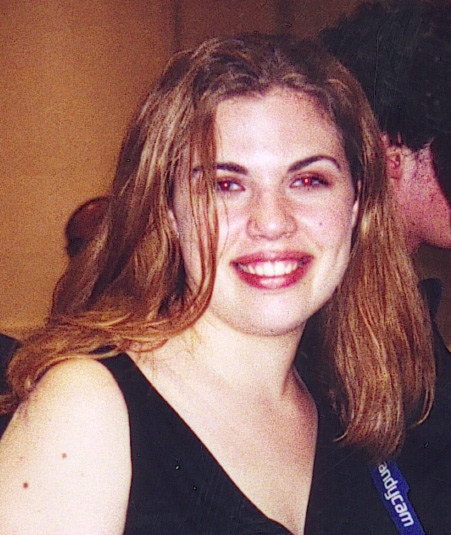
Born in Coshocton, Ohio, Ms. Kridler began playing violin at the age
of three. She received her Bachelors Degree in Psychology from Harvard
University in 2001, and is currently working towards a Masters of Music
degree in violin performance at the New England Conservatory. Her principle
teachers have included James Buswell, Gregory Fulkerson, and Roland and
Almita Vamos. As an active solo and chamber musician, Ms. Kridler has been
a semi-finalist in the 2001 Fischoff International Chamber Music competition,
and
a prize-winner at the Lima Symphony Competition. She has also been a participant
in many music festivals including the Taos School of Music, Weathersfield
and Musicorda.
Pedro Persone, harpsichord/conductor
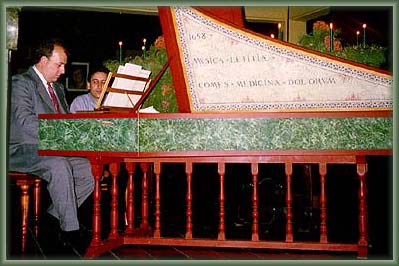
was born in Tietê, SP, Brazil, and started his harpsichord study
at the Conservatório Musical "Dr. Carlos de Campos", Tatuí,
SP, with Maria José Carrasqueira. He studied privately with Roberto
de Regina in Rio de Janeiro, and received his Bachelor degree in Harpsichord
at the Universidade Estadual de Campinas (UNICAMP) in the class of Dr.
Helena Jank. In Europe, he attended courses with Felipe Nabuco-Silvestre
(Brazil/Portugal), Christophe Rousset (France), and Rinaldo Alessandrini
(Italy). In 1977 Mr. Persone studied with Huguette Dreyfus at the Ecole
Nationale de Musique de Bobigny, France; in 1988 with Jacques Ogg, at the
Academie voor Oude Muziek, Amsterdam. With a scholarship from the Fundação
Vitae, he attended the "Primer Curso de Música Barroca Ciudad de
Segovia" in the fortepiano class of Patrick Cohen (Fance). He is the fortepianist
of the "Klassisch!" duo (with the soprano Andrea Kaiser). There is no other
active performer of Fortepiano besides Persone in Brazil. As teacher, he
has worked at the Festival de Londrina, Oficina de Música de Curitiba,
Festivais de Artes de Itu, and is the professor of harpsichord, chamber
music, and thoroughbass at the Conservatório Dramático e
Musical "Dr. Carlos de Campos", Tatui. In 1996, he received his Master
of Musical Arts from UNICAMP, with research on unmeasured works. In 2000,
with a scholarship from CAPES, Persone began a doctorate program (D.M.A.)
in Historical Performance on the Harpsichord and the Fortepiano at Boston
University under the orientation of Professor Mark Kroll.
Dimitar Petkov, viola

A native of Bulgaria, Mr. Petkov recently moved to Boston from Miami,
Florida. He has performed as soloist and chamber music in Bulgaria, Greece,
Germany, Italy, Turkey and the United States. Mr. Petkov has served as
Principal Viola with the Southwest Florida Philharmonic, the Spoleto Festival
Orchestra in Spoleto, Italy, and the Bulgarian State Acadamy Orchestra.
He has also performed with the New World Symphony, the Florida Philharmonic,
the Fort Worth Symphony, the National Repertory Orchestra, the Sofia Philharmonic
and the Bulgarian National Radio Orchestra. Mr. Petkov was awarded First
Prize in the Bulgarian National Chamber Music Competition and Second Prize
in the Bulgarian National Music Competition. He is currently an Artist
Diploma candidate at the Longy School of Music, under the tutelage of former
Boston Symphony Principal Violist Patricia McCarty.
Matt Reeder, bass

Originally from Atlanta, Georgia, Matthew Reeder moved to the Boston
area in the fall of 2001 after completing his Bachelor of Music degree
at Indiana University, where he studied with Lawrence Hurst. Currently,
Mr. Reeder is completeing a Master of Music degree at Boston University,
studying with Boston Symphony member John Stovall. As a student at Boston
University, he recently received the Dean’s Award for the 2002-2003 school
year. Mr. Reeder won first prize in the International Society of Bassists'
1999 orchestral competition. He was a fellow at Tanglewood Music Center
in 2000 where he was invited to participate as the only bass player in
the Bach Cantata Project. Since moving to Boston, Mr. Reeder has performed
with the Indian Hills Symphony Orchestra, UMASS Boston Chamber Players,
the Connecticut Valley Chamber Orchestra, the Portland Symphony Orchestra,
the Plymouth Symphony Orchestra, the Harvard Women’s Chorus, and Emmanuel
Music. Currently, he is serving as Principal Bass of the Hingam Symphony
Orchestra. Mr. Reeder has also performed with the Atlanta Symphony Orchestra
and the Boston Symphony Orchestra.
Wendy Richman, viola
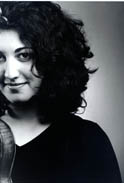
has received international praise for her creative and committed performances.
A 2001 graduate of the Oberlin Conservatory of Music, she has been a three-time
prizewinner in her native Milwaukee's Civic Music Association competition
and has also been recognized in the American String Teachers Association
and Primrose Memorial Scholarship Competitions. Ms. Richman's affinity
for contemporary music has led her to premiere numerous works for solo
viola and for ensembles; she maintains a close collaboration with composer
Jeffrey Mumford and has also worked closely with such distinguished composers
as George Crumb, Thea Musgrave, Huang Ruo, and Joan Tower. She has recorded
for Bloodshot Records, Between the Lines, and AURec, and will record music
of Jeffrey Mumford for Albany Records in 2003. Summer activities have included
Madeline Island Music Camp, the Quartet Program at Bucknell, Killington
Music Festival, Aspen Music Festival, and the Norfolk Chamber Music Festival.
This summer, she will attend Yellow Barn Music Festival and School in Putney,
VT. Recent engagements include solo recitals at the Phillips Collection
(Washington, DC) and Schwan Hall (Milwaukee, WI) as well as chamber music
performances on the Cleveland Museum of Art's Aki Festival of New Music,
Chicago's Music in the Loft Series, and the Cutting Edge Concert Series
in New York City. She is a founding member of the International Contemporary
Ensemble (ICE), with whom she will premiere several works in Chicago this
June and on next season's Bargemusik series. In the fall, she will appear
twice at New York's Miller Theater in concerts of Huang Ruo's and Jeffrey
Mumford's works. Ms. Richman has studied at the Oberlin Conservatory of
Music and at the Cleveland Institute of Music, where her teachers have
included Peter Slowik and Jeffrey Irvine (viola), Marlene Rosen (voice),
and the St. Petersburg Quartet, Gregory Fulkerson, and Peter Salaff (chamber
music). She recently moved to the Boston area and will pursue graduate
studies at the NEC in the fall, where she will work with Carol Rodland
and Kim Kashkashian
Sara Stalnaker, cello

A native of Portland, OR, Ms. Stalnaker recieved her bachelor's degree
from Oberlin Conservatory and her master's of music from Rice University.
She is a member of the New Haven Symphony Orchestra, and subs regularly
with the Rhode Island Philharmonic and Ocean State Orchestra. Ms. Stalnaker
makes her home in Providence, RI, where she plays in Circle, a quartet
comprising of faculty at Community MusicWorks , a non-profit music program
based in low-income neighborhoods. Ms. Stalnaker has participated in festivals
including Sarasota Music Festival, Aspen Music Festival, Music Academy
of the West, and Round Top Music Festival. Major performances include solo
appearances with the Oregon Symphony, the Portland Festival Symphony, and
Rogue Valley Symphony. Her principal teachers include Norman Fischer, Peter
Rejto, and Hamilton Cheifetz.
Nikola Takov, violin

A Native of Sofia , Bulgaria, Mr. Takov began playing violin at the
age of five. He received his Bachelors Degree in Violin Performance from
Louisiana State University and his Masters of Music from Boston University.
His principle teachers include Yuri Mazurkevich, Kevork Mardrossian, Dora
Ivanova, and Elmar Oliviera. Mr. Takov has performed extensively throughout
the United States and Europe in solo, chamber and orchestral settings.
Nikola Takov has won competitions and has appeared as a soloist with numerous
ensembles in Europe and the United States, as well as performing in numerous
master classes including those held by David Cerone, Joseph Silverstein,
Camila Wicks, Sergiu Luca, and Charles Castleman. Mr. Takov currently performs
with the Portland Symphony, Boston Modern Orchestra Project, Boston Philharmonic
Orchestra, and the Indian Hill Symphony.
Viktoria Tchertchian, violin

Born in Plovdiv, Bulgaria, Ms. Tchertchian began playing violin at
the age of five. She received her Bachelors Degree in Violin Performance
from Lousiana State University in 2001 and is currently completing a Performance
Diploma at the Longy School of Music. Her principle teachers include Laura
Bossert, Kevork Mardirossian, James Alexander and Dora Ivanova. Ms. Tchertchian
has participated in festivals including the Round Top International Music
Festival, the Lyrica International Chamber Music Festival, and the Heber
Springs Chamber Music Festival. She was a featured soloist with the Plovdiv
National Catholic Choir in performances in France, Belgium, Germany, Norway,
and the Czech Republic. Ms. Tchertchian’s orchestral experience includes
positions in the Baton Rouge Symphony, the Louisiana State Symphony, and
the Plovdiv Philharmonic, and she currently performs with the Indian Hill
Symphony, the Cape Cod Symphony, and the Plymouth Symphony.
Shieh-Jian Tsai, violin
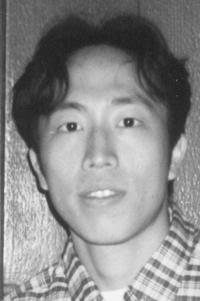
Mr. Tsai was born in Taipei, Taiwan, where he began playing the violin
at the age of seven. After coming to the United States, Mr. Tsai studied
privately with Prof. Gerardo Ribeiro at the Northwestern University for
several years. Mr. Tsai received his Bachelors of Music in Violin Performance
from University of Illinois at Urbana-Champaign and his Masters of Music
from the New England Conservatory. Principle teachers include Sherban Lupu
and Masuko Ushioda. Mr. Tsai has participated in summer festivals such
as the International School for Musical Arts and Musicorda, and he was
invited to be a fellow at the Tanglewood Music Center this summer.
